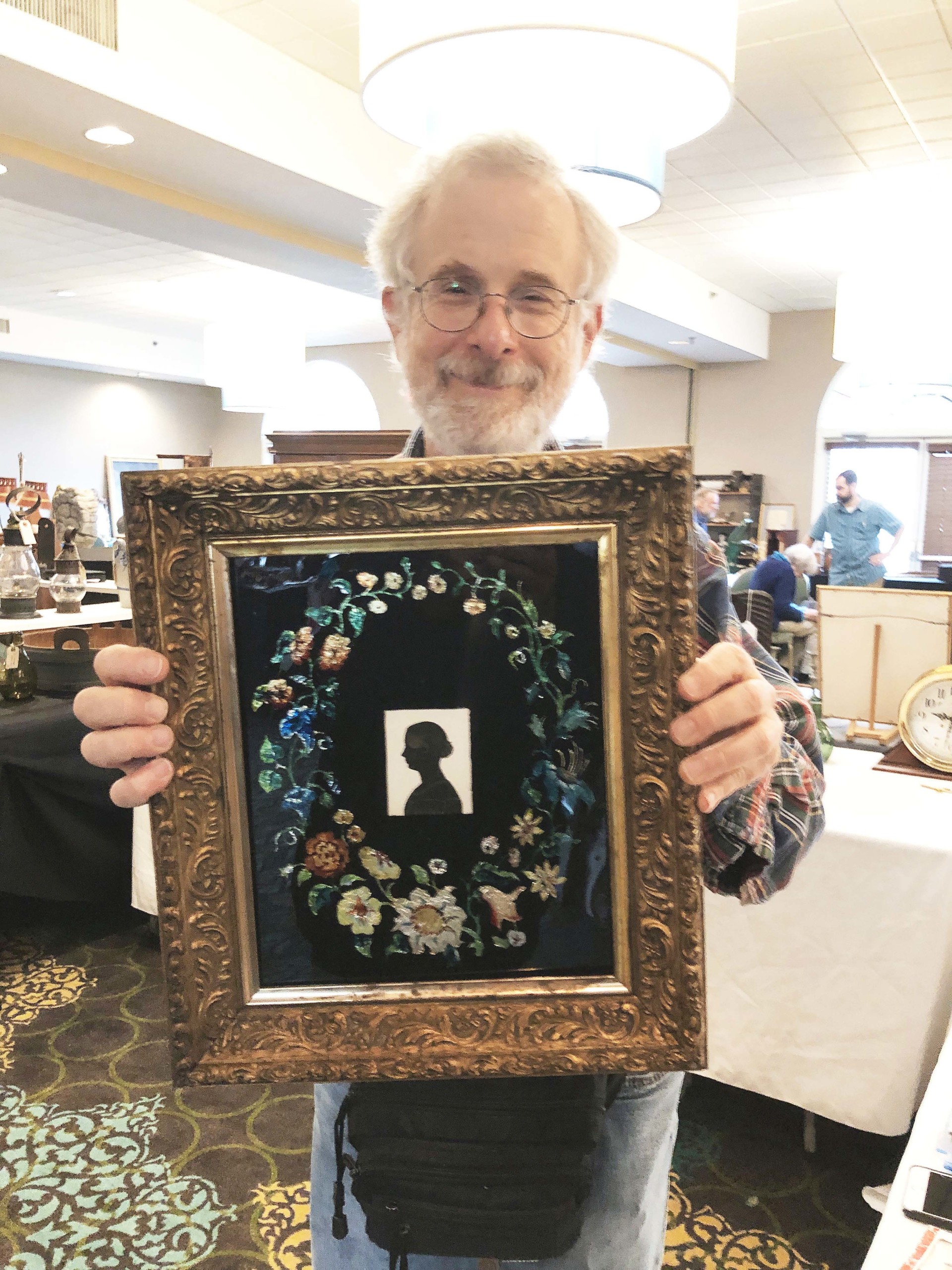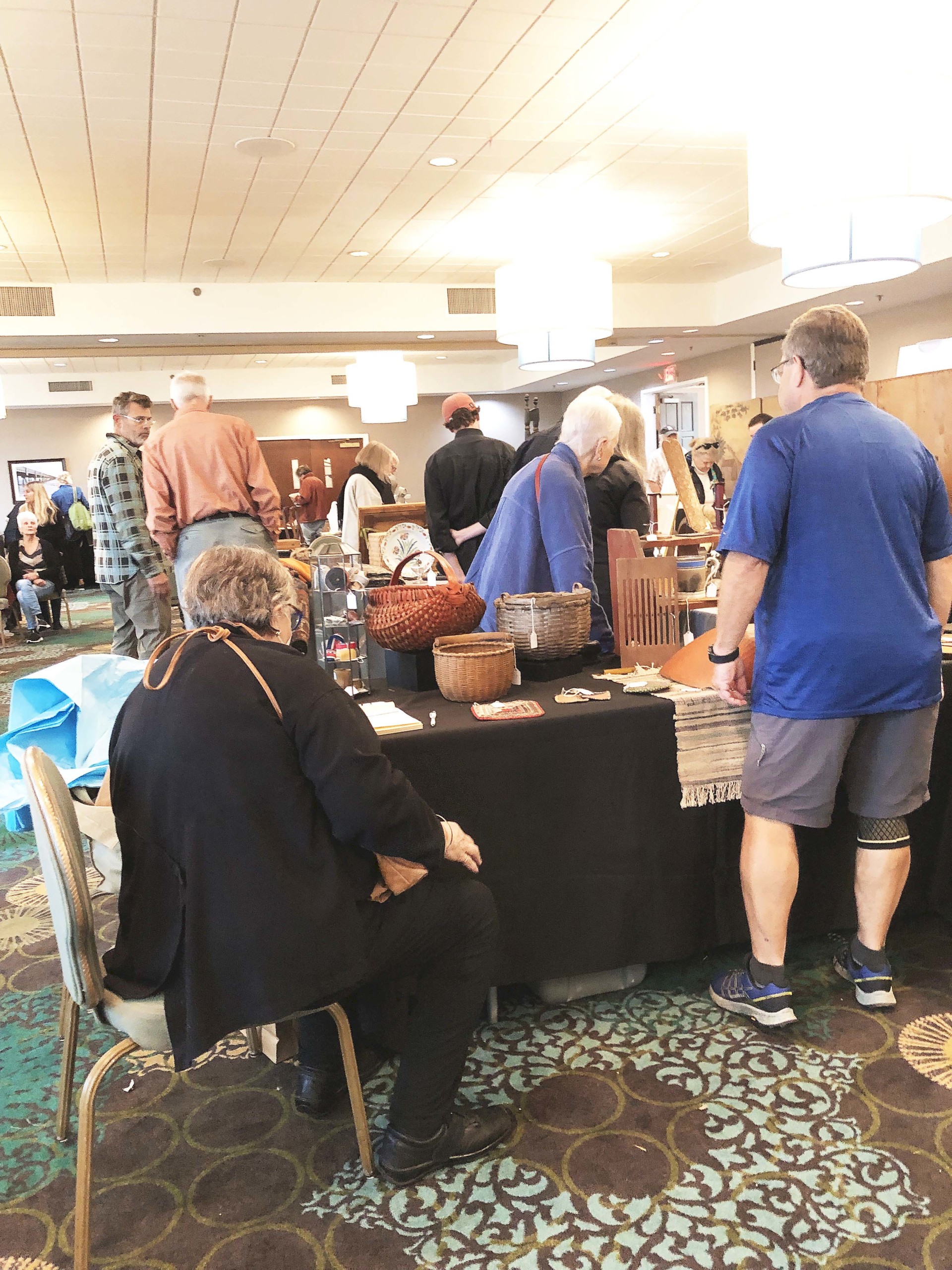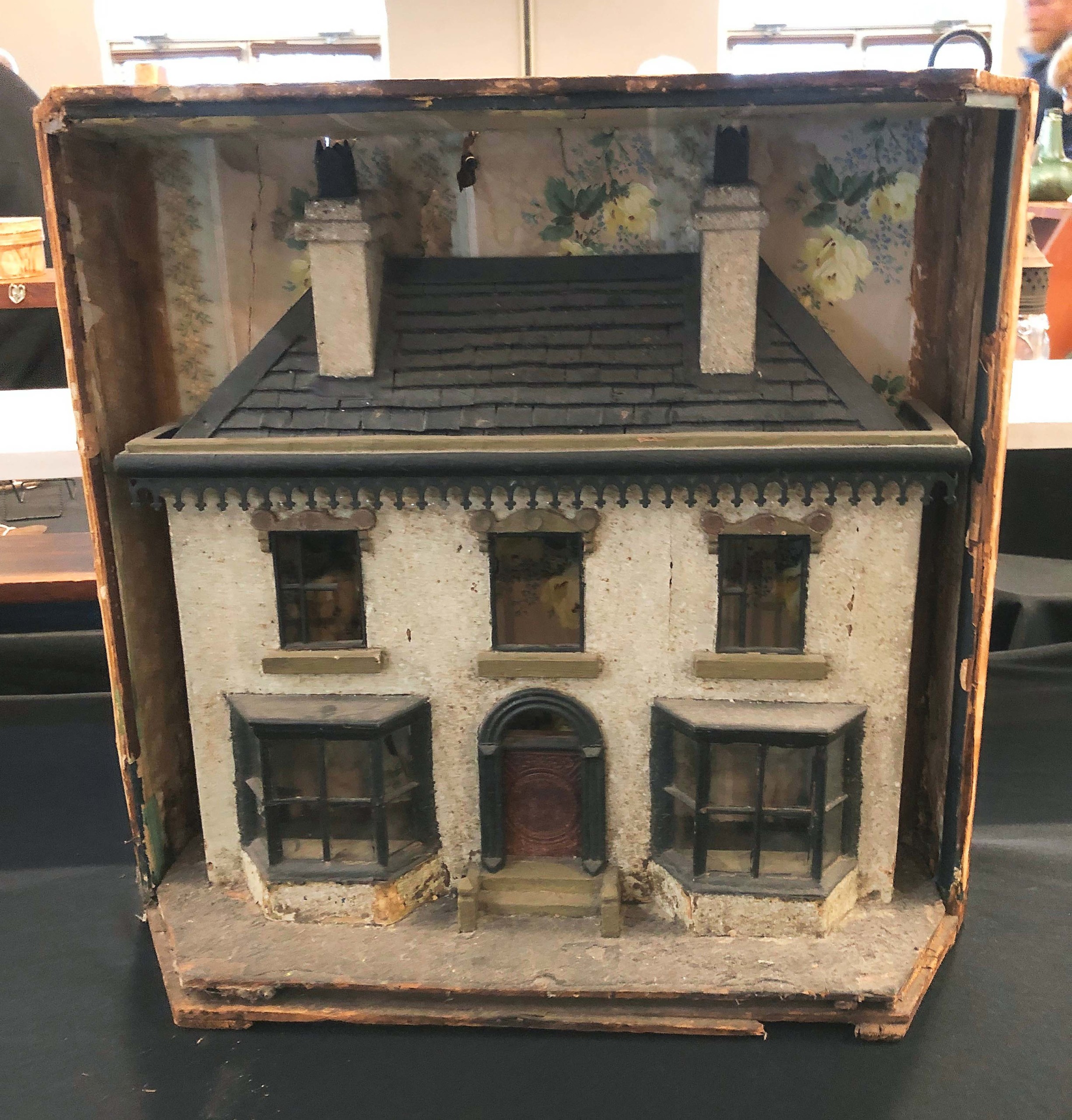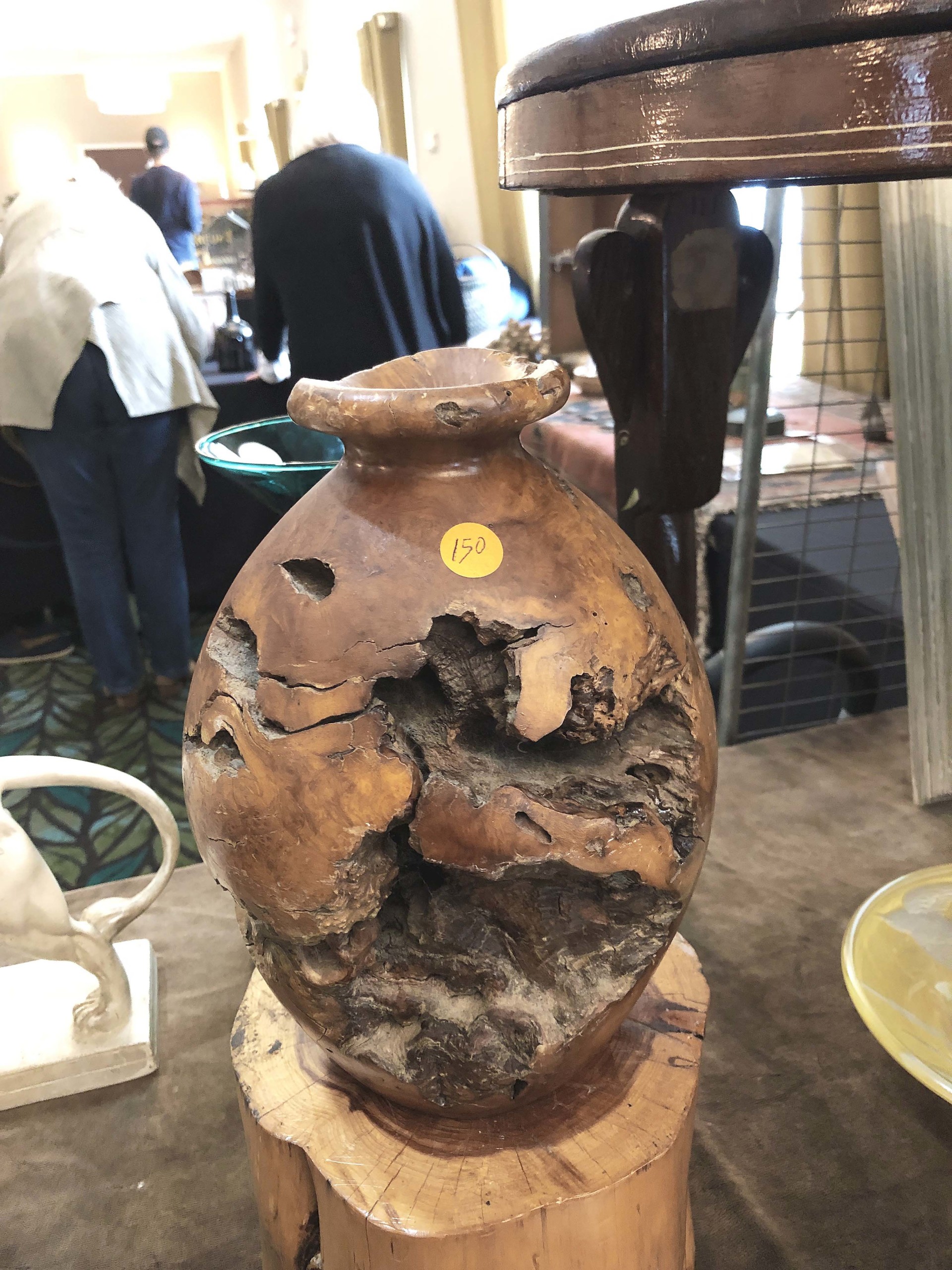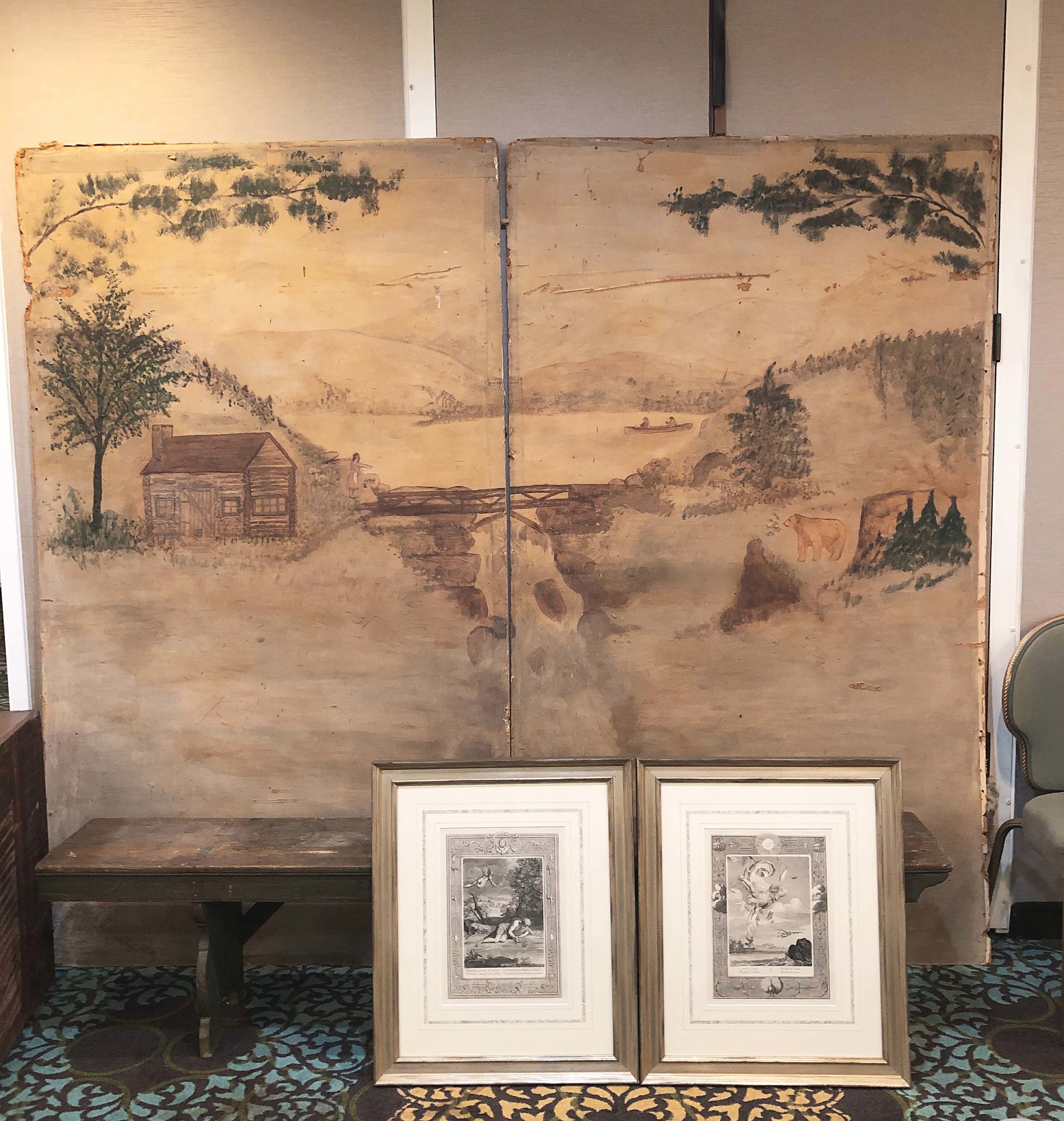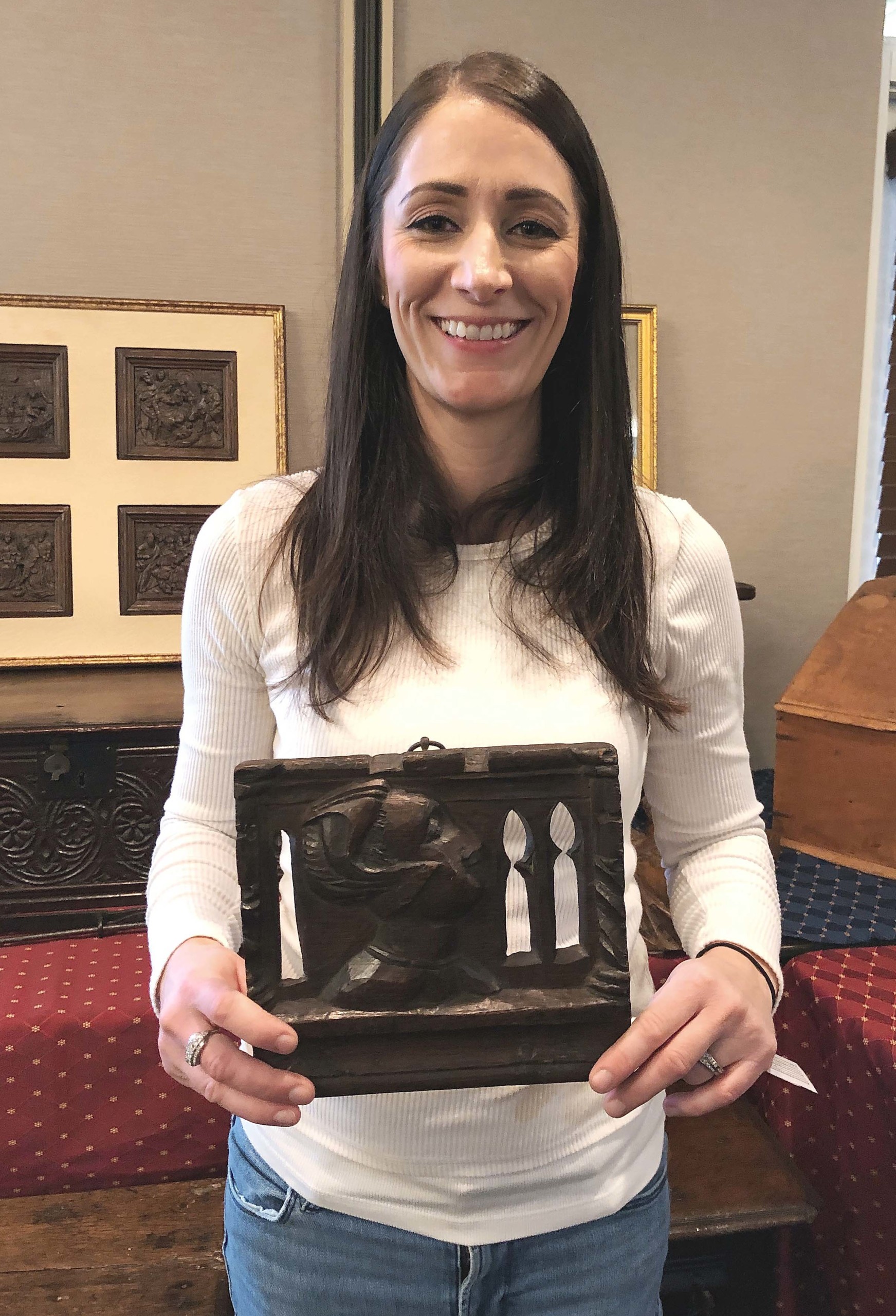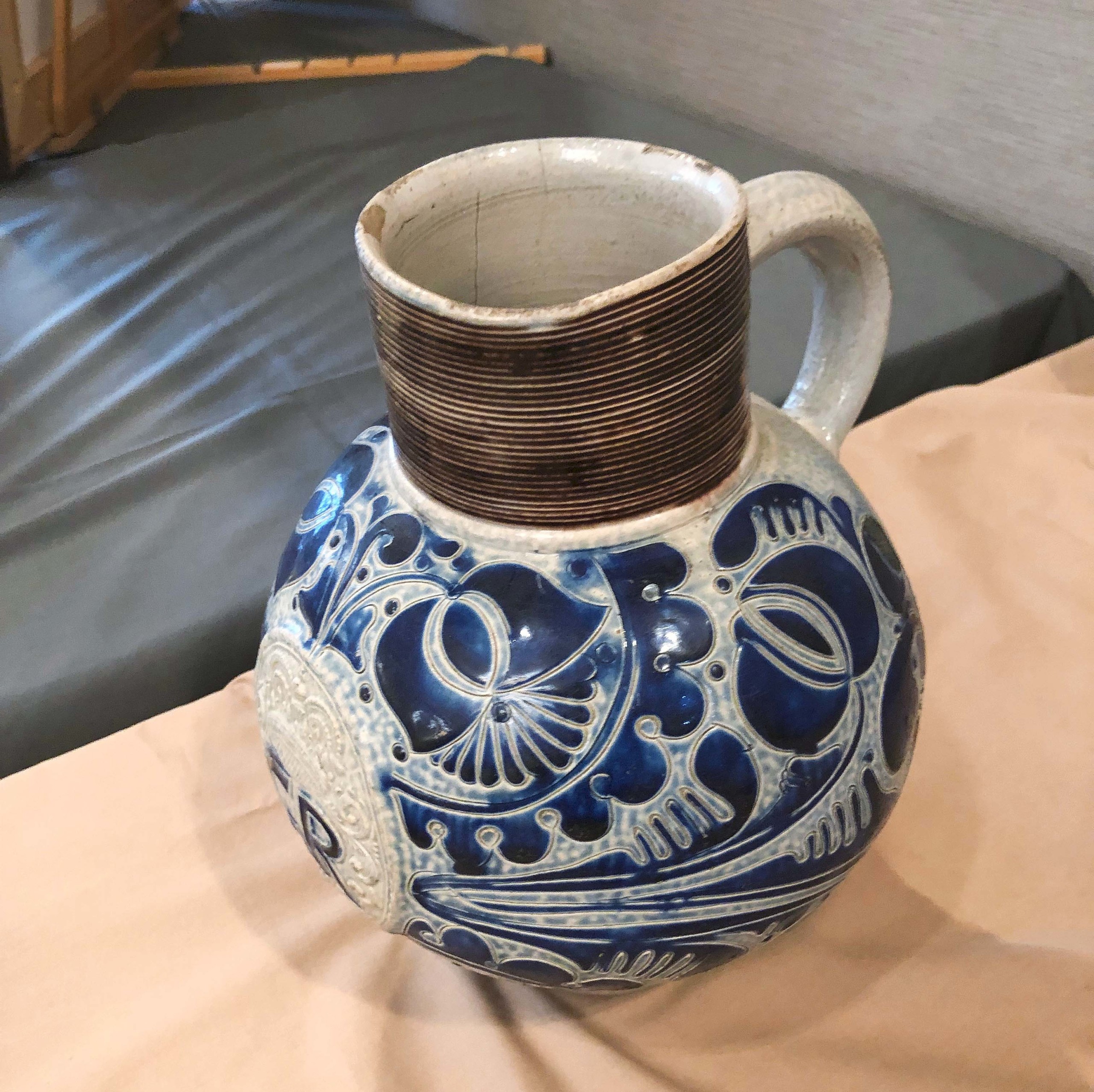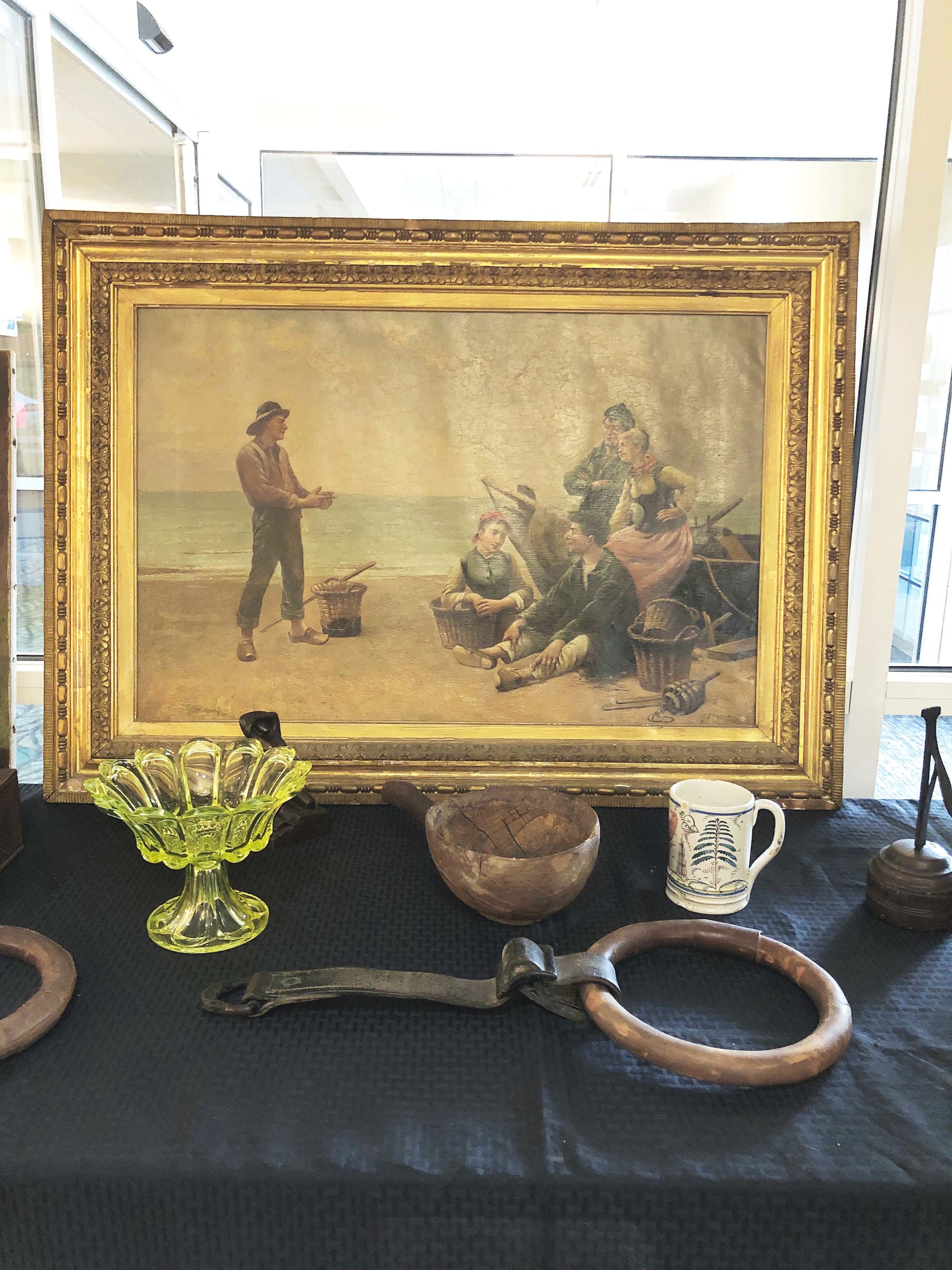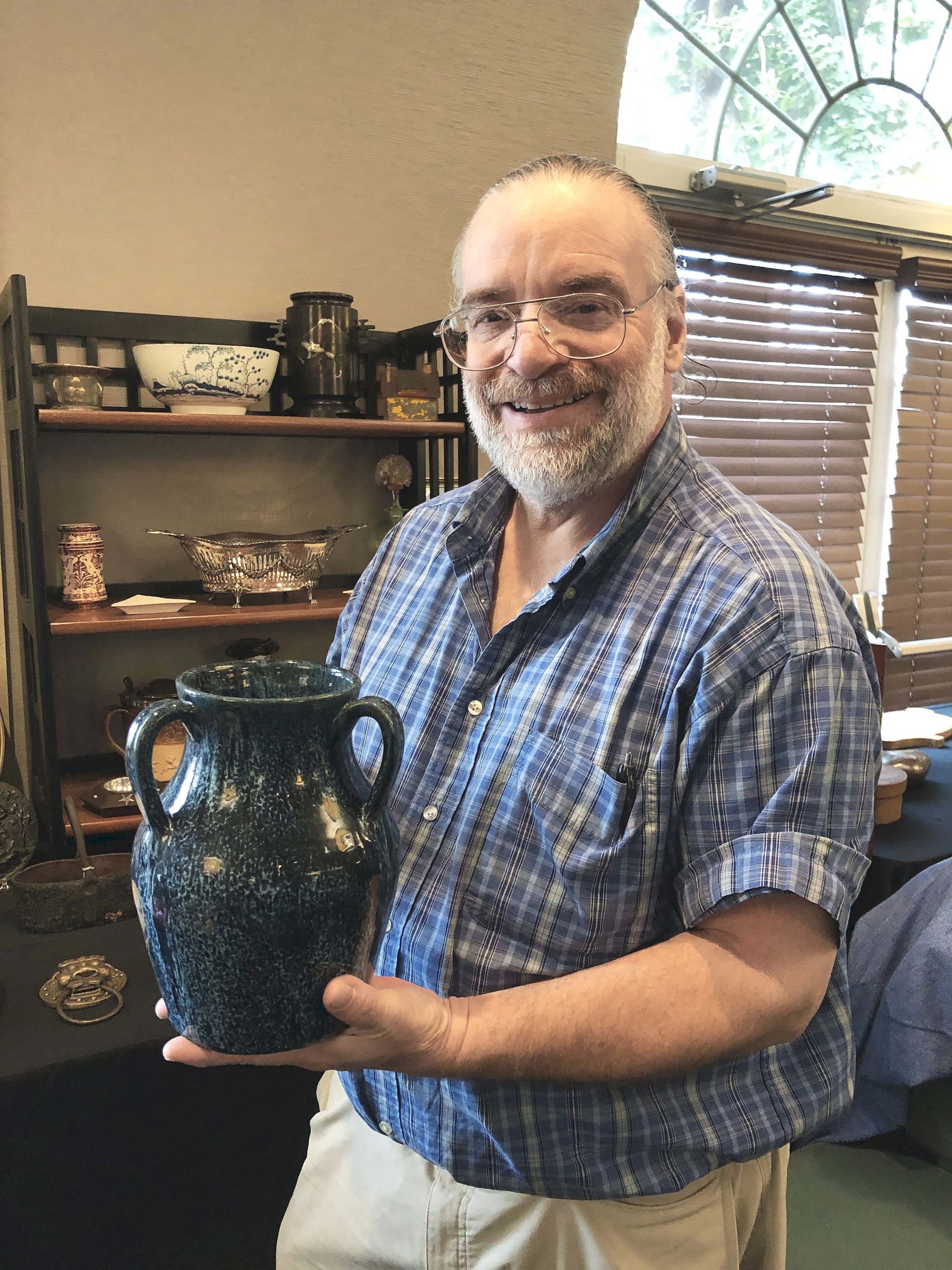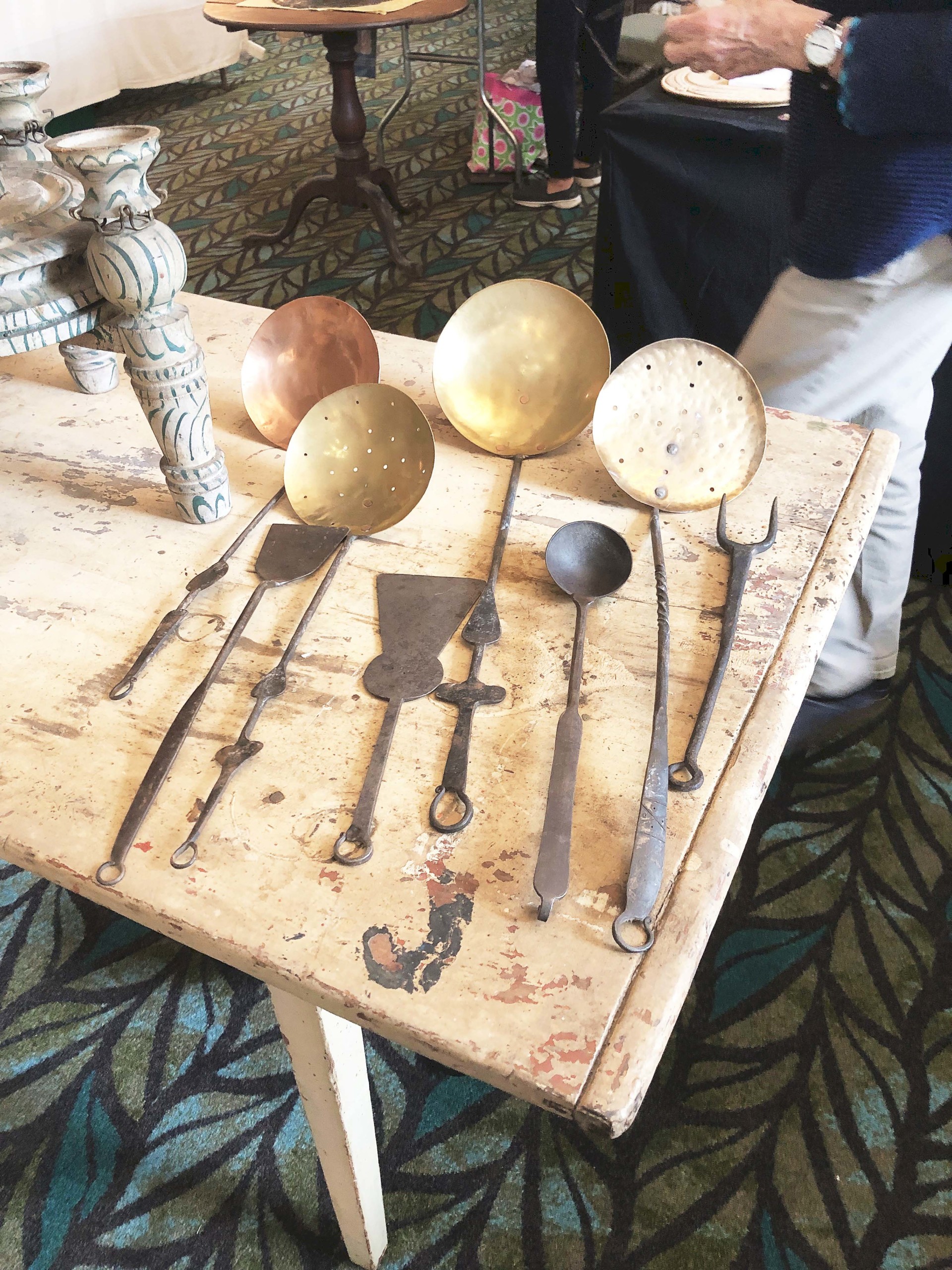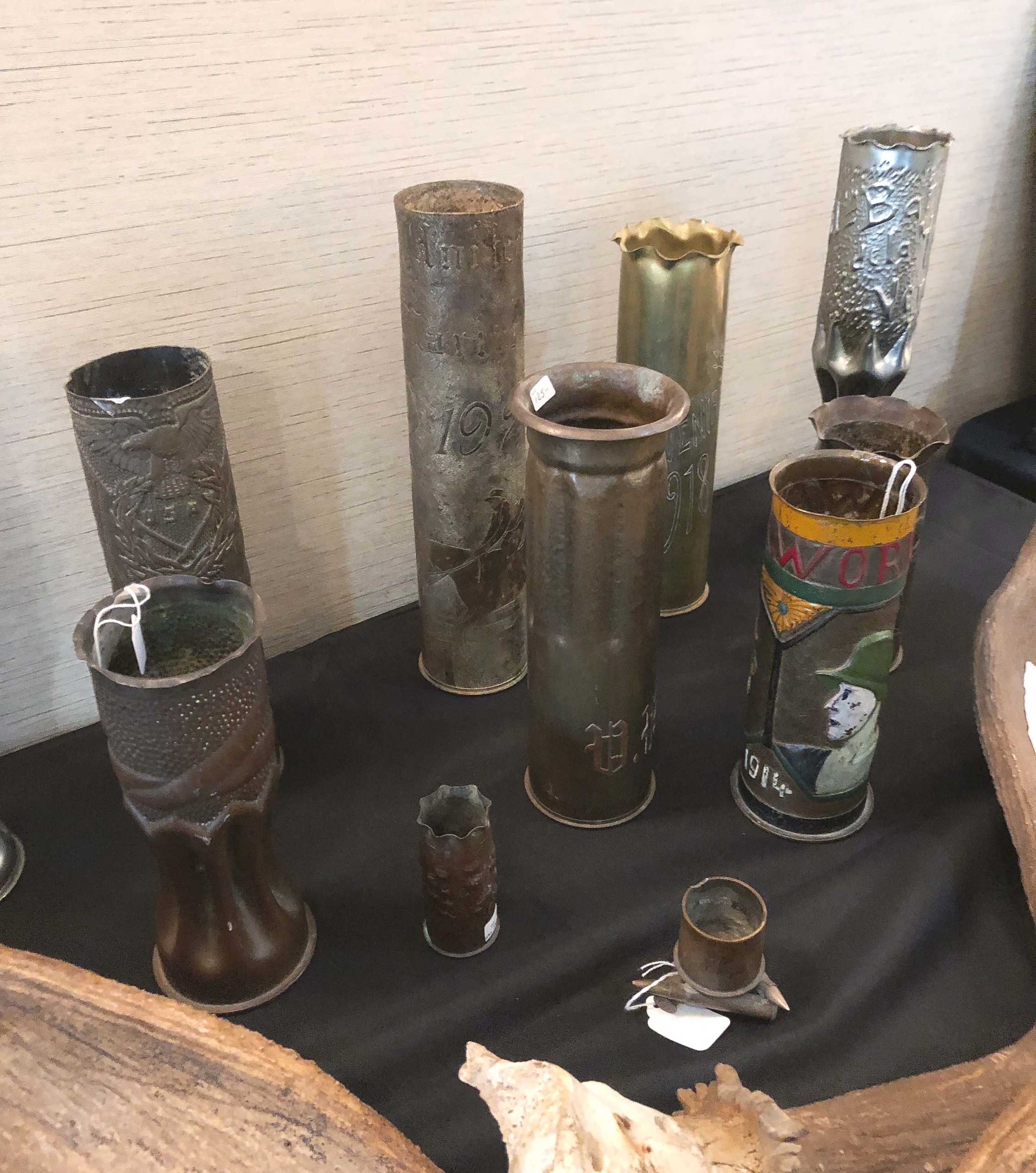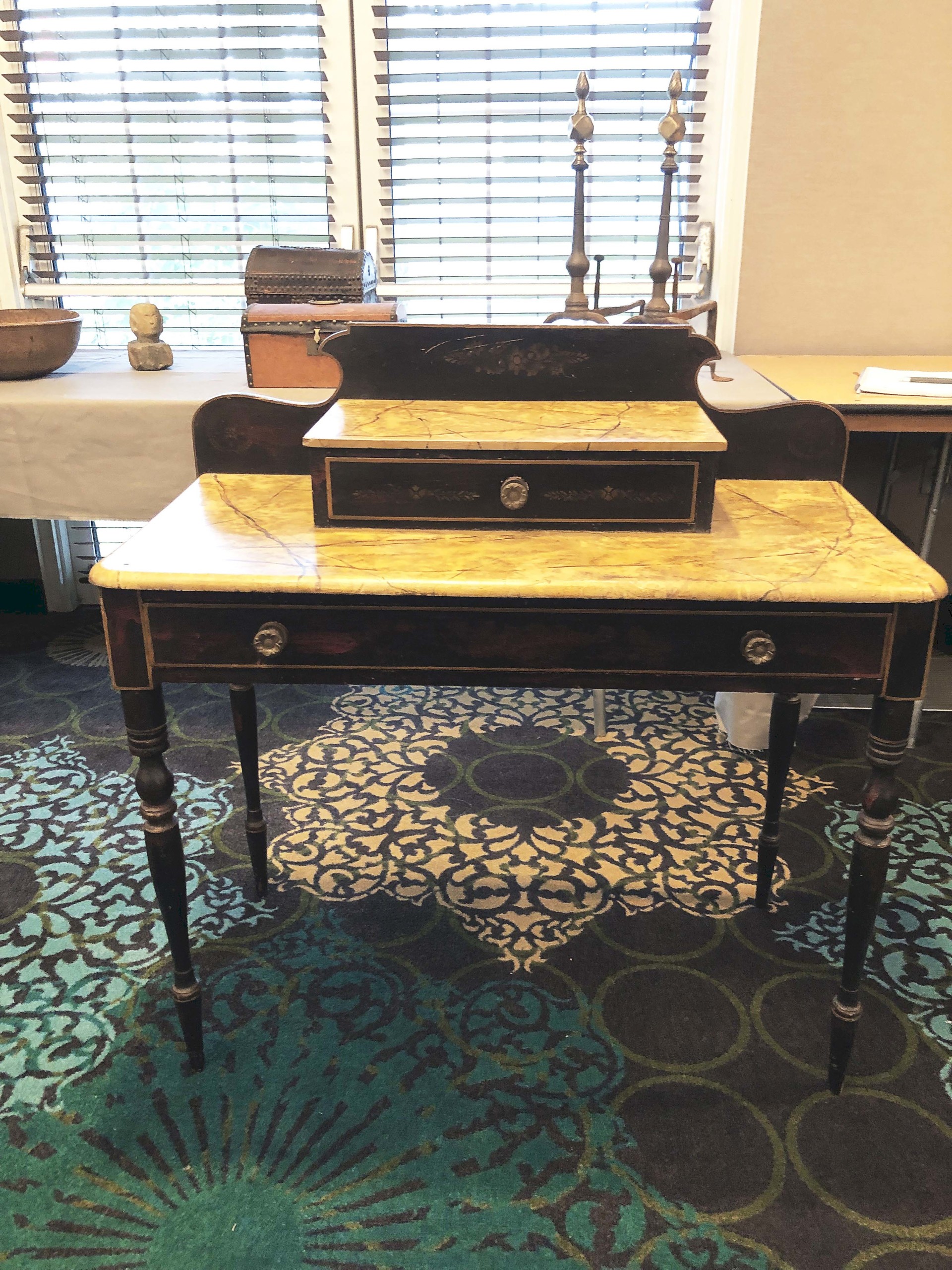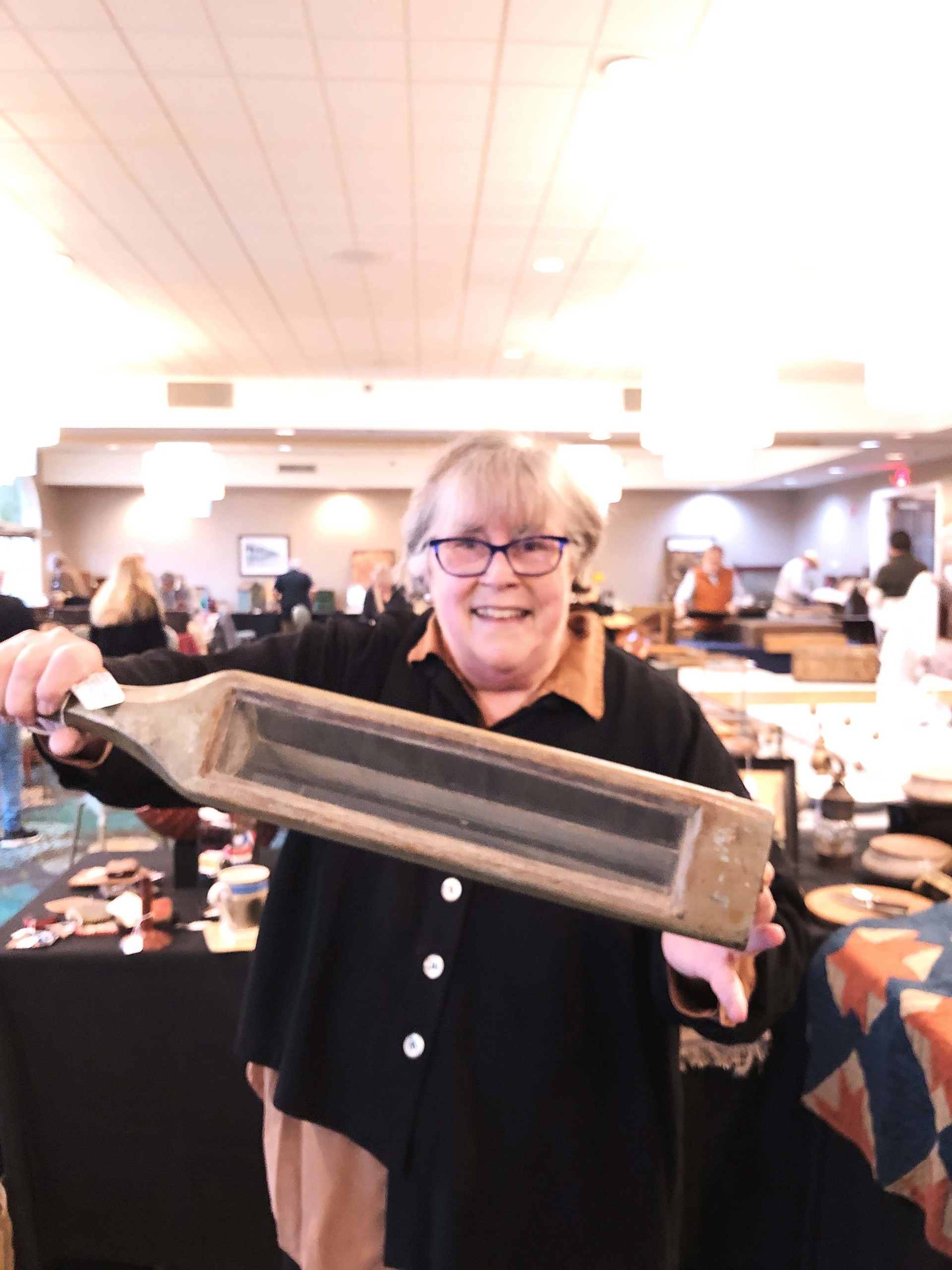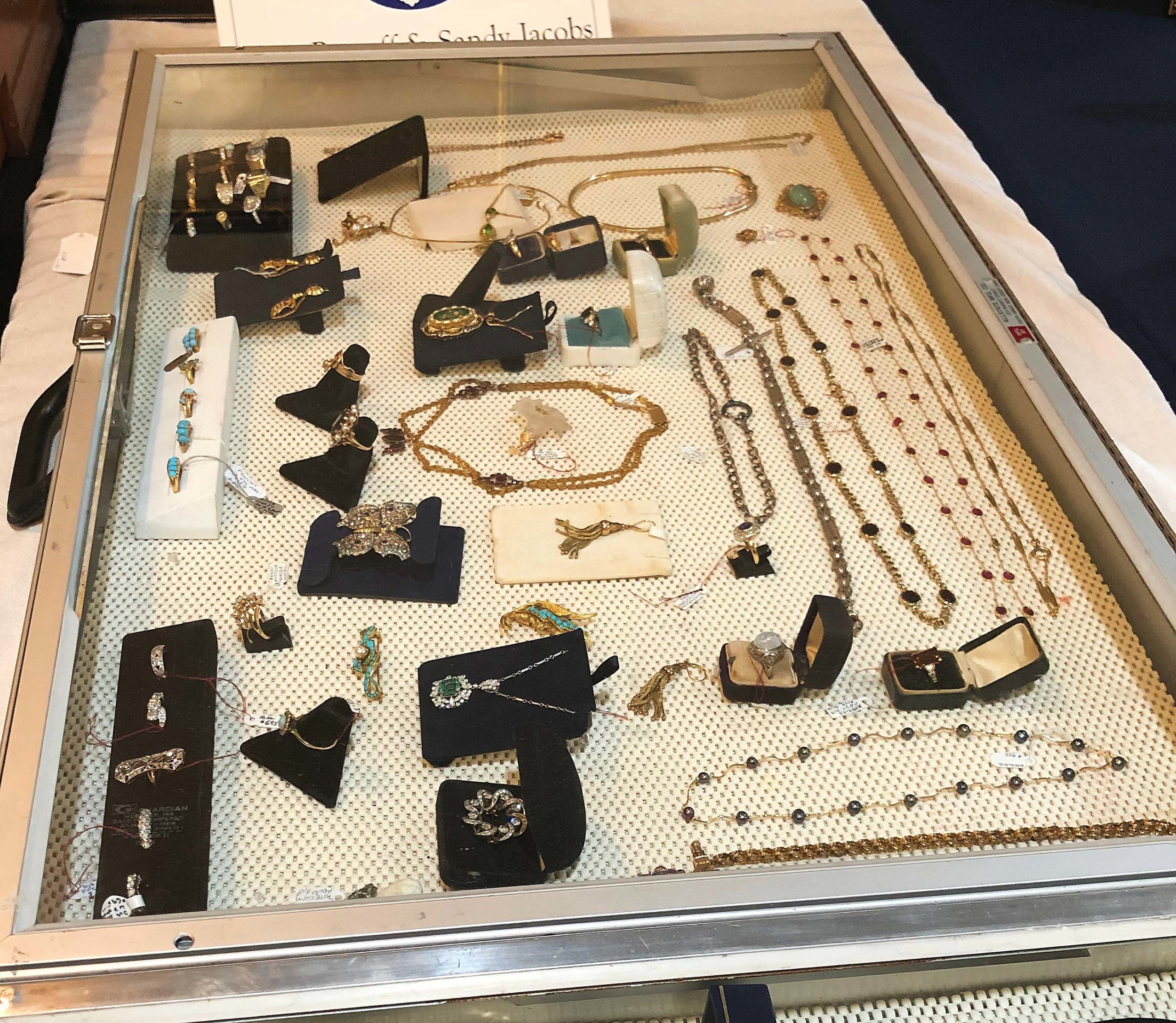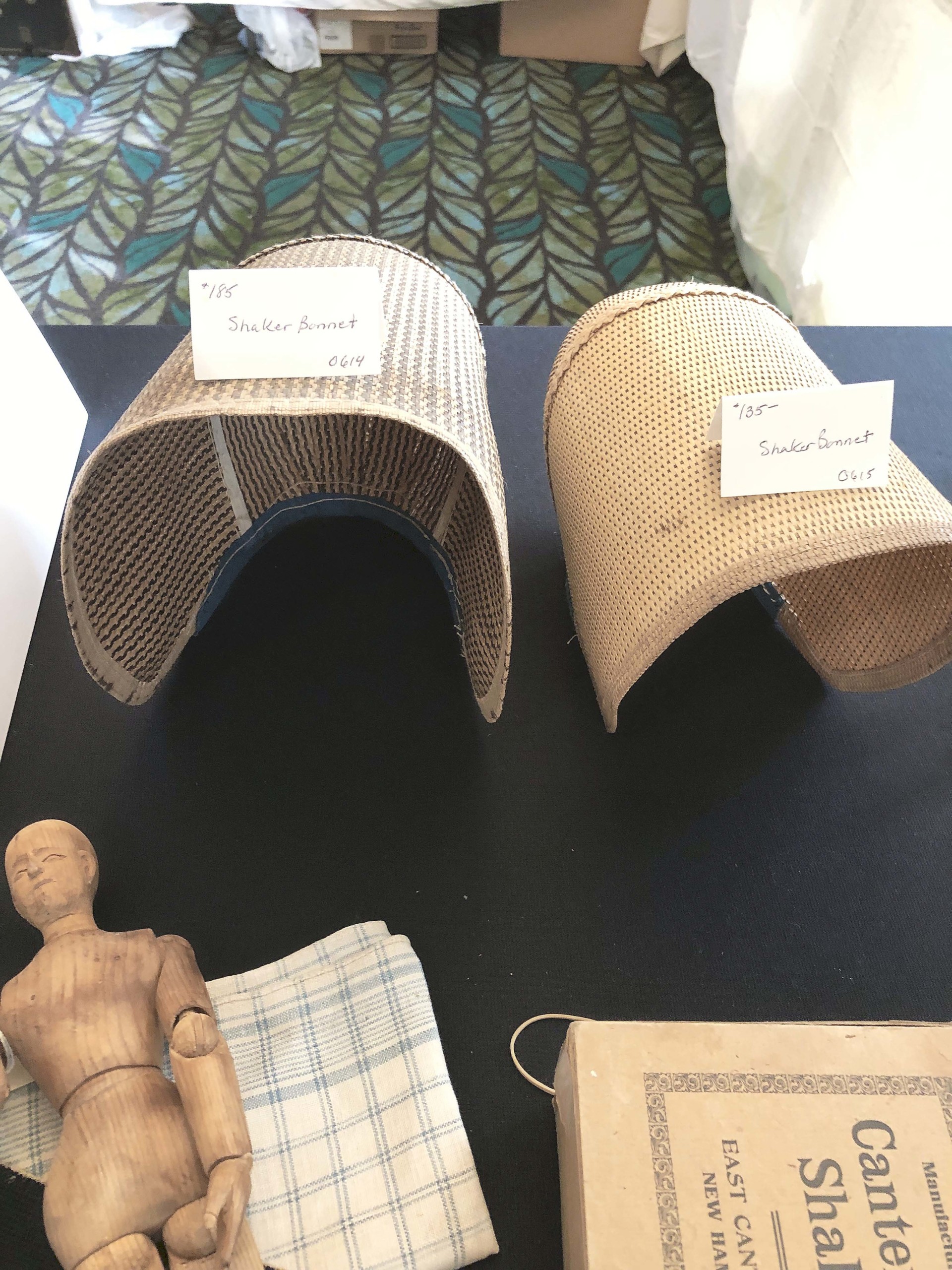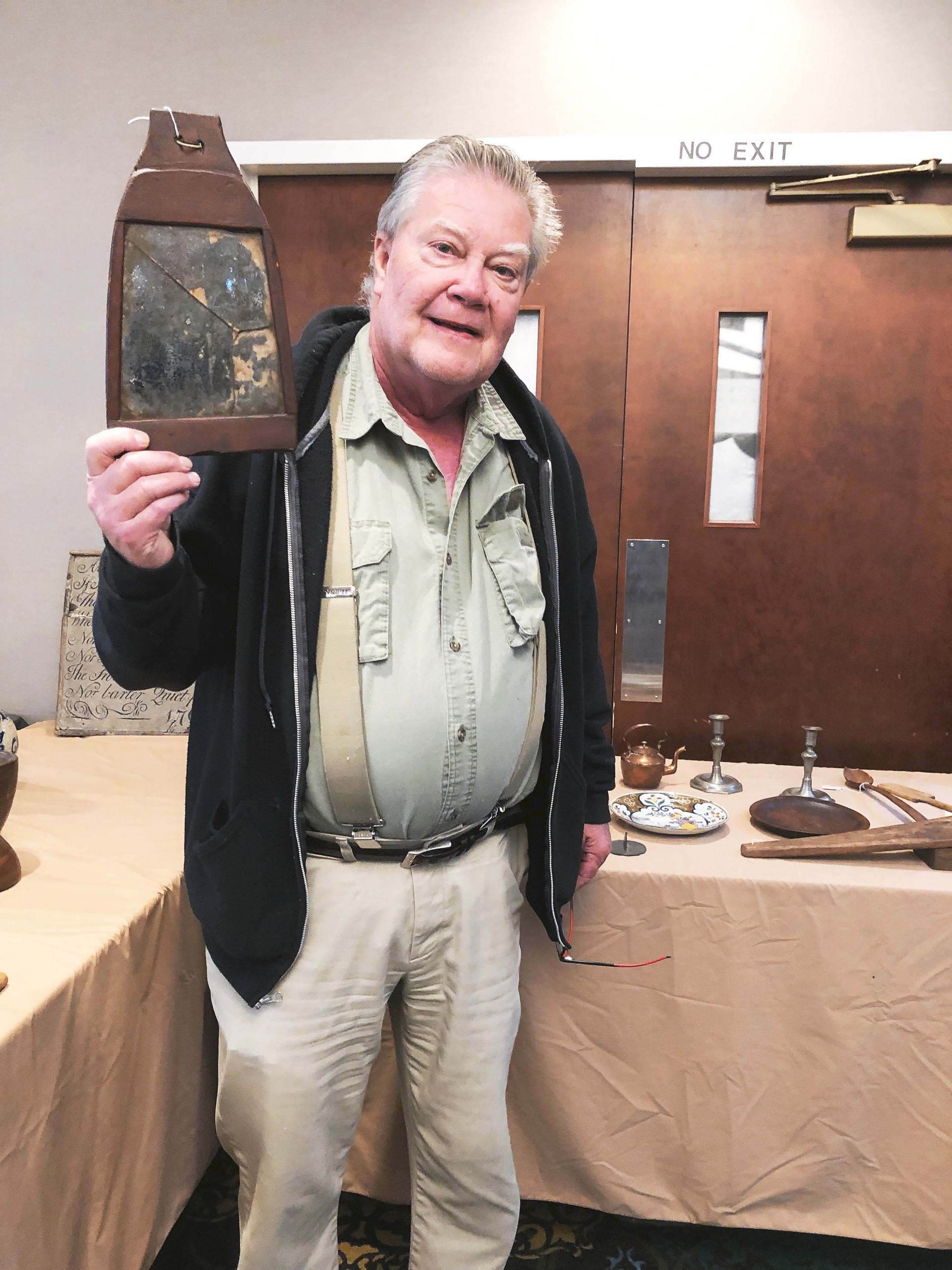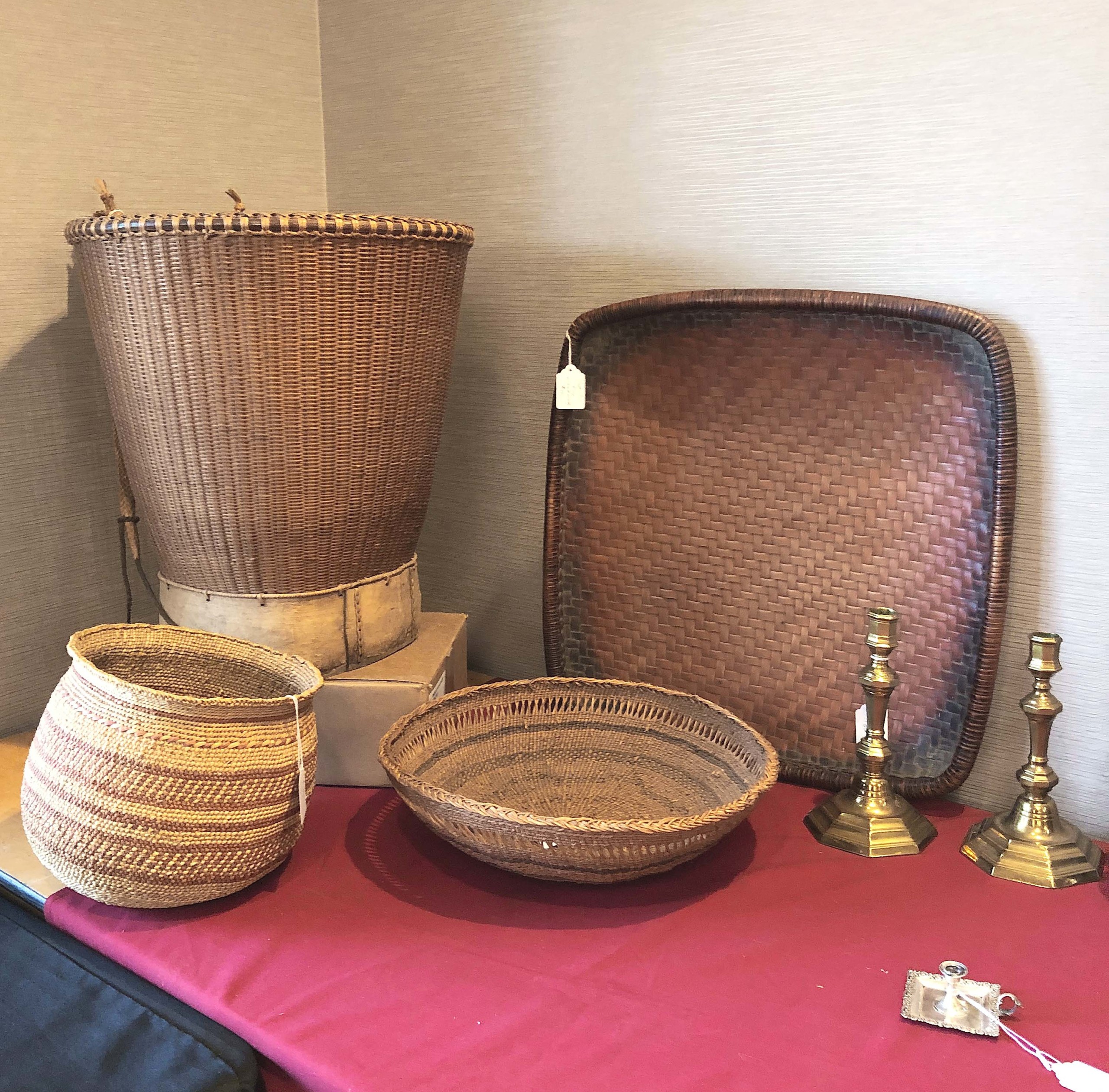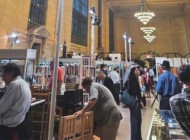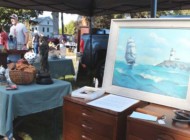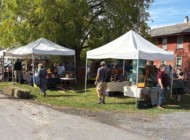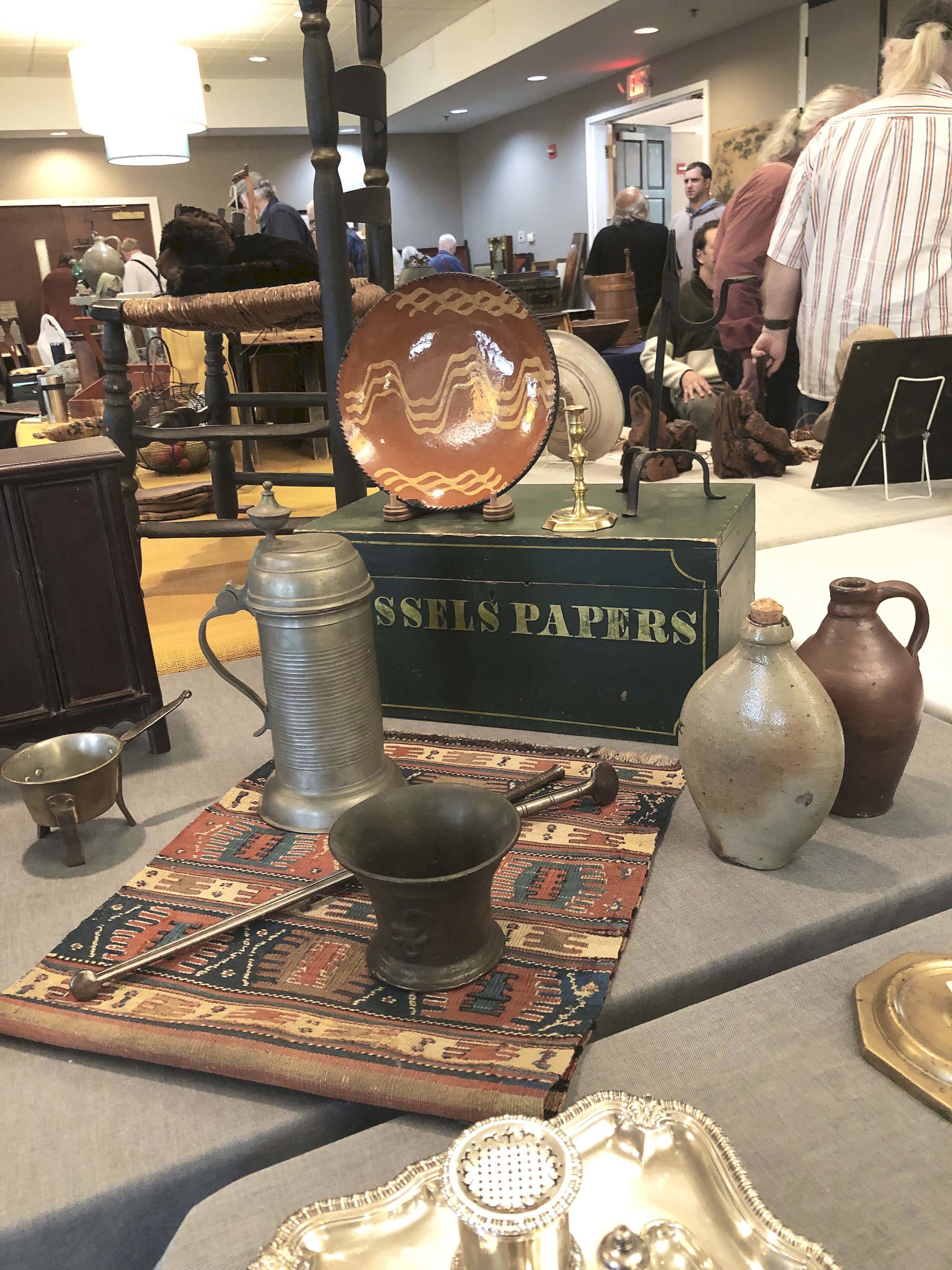
The ship captain’s storage box for “vessels papers” was priced $950 by Ross Levett, Thomaston, Maine. As can be seen in this photo, he also had early metalware, stoneware and redware.
Review & Photos By Rick Russack
HAMPTON, N.H. — Peter Mavris’ October 1 show was the largest he’s ever had in Hampton and more than filled the available space. It was the first show of his 2023-24 monthly series, which usually take place on the first Sunday of each month (or close to that) from now until April.
This is the seventh year of these shows, and they continue to improve in size and quality. The first one had 32 dealers and this one fielded more than 40. More than size, it’s the variety and quality of the offerings that quickly become apparent. Most of the exhibitors are regulars who know what is likely to sell; many of the customers are also regulars, who know which dealers are likely to have things of interest. The show is open from 10 am to 1 pm, booth rent is inexpensive and moving in and out for dealers is simple. An enthusiastic crowd awaited the opening and within a few minutes dealers were writing sales slips.
Aside from the simple mechanics of the show, the draw is the quality and variety of the offerings. From an age perspective, Antiques and The Arts Weekly saw items produced over an almost 500-year time span. Heather Lalonde, South Hadley, Mass., specializes in English oak furnishings that date back to the 1600s.
Oliver Garland, Falmouth, Mass., had items from the 1700s. Seventeenth and Eighteenth Century ceramics were available from several dealers, including Sam Herrup, Sheffield, Mass.; John Prunier, Warren Mass.; Ross Levett, Thomaston, Maine; Malcolm Magruder, Millwood, Va.; and Brian Cullity, Sagamore Mass.; among others. Bracketing the nearly 500-year time span was a collection of World War I trench art in the booth of the Curiosity Shop, Parsonfield, Maine.
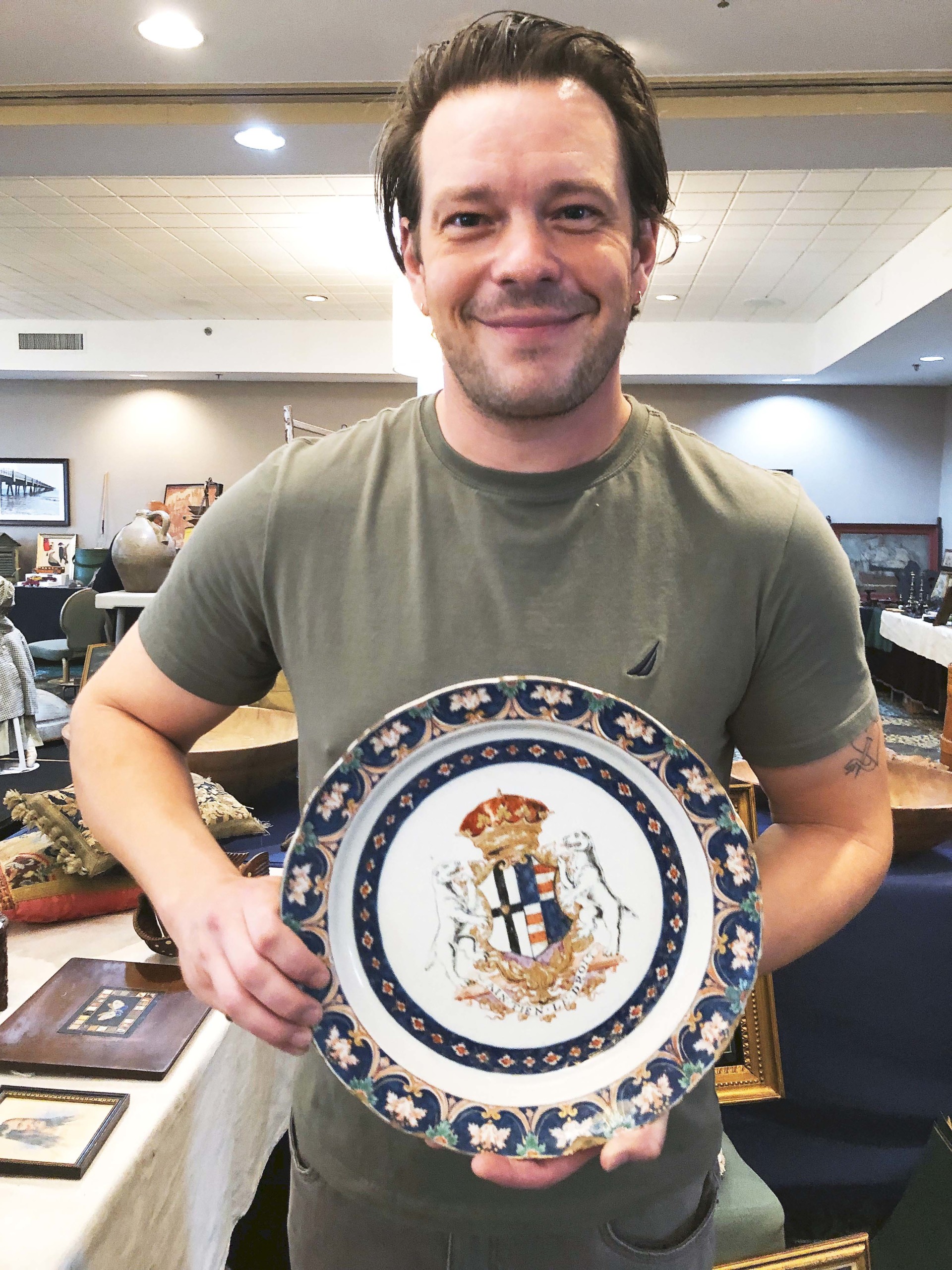
This circa 1720 Dutch delft armorial charger was in the booth of Oliver Garland, Falmouth, Mass. The gilt highlights of the charger are rarely seen elements, according to Garland. It had been in the Mark and Marjorie Allen collection and it was priced $4,250.
Early American furniture was available from several dealers, including Peter Eaton, Wiscasset, Maine; Richard Kenney, Dover, N.H.; Greg Hamilton, Vergennes, Vt.; Josh Gurley, Scarborough, Maine; and others. Asian material was available in several booths and so was early glass. Folk art abounded, as did early lighting, baskets, iron and fireplace accessories.
Peter Eaton filled a booth with furniture; he said he thought his booth would be larger. One of his interesting pieces, priced at $2,200, was a grain-painted Sheraton server, circa 1820. It was painted red and black with a faux-marble surface. There was a full-width drawer, with a small glove drawer at the top. Included was an extensive family history, listing previous owners of the server. Richard Kenney, New Castle, N.H., was asking $850 for a set of six paint-decorated arrow-back chairs; his booth also had an Eighteenth Century tavern table, with a one-board top for which he was asking $750. Kenney’s booth included a large pair of acorn finial andirons, marked $1,200. Sharing Kenney’s booth was Tom Moser, Gray, Maine, who had a circa 1740 Philadelphia Windsor armchair priced at $550.
Not all the furniture was full size. Bob Markowitz, Groveland, Mass., offered a miniature grain-painted stepback cupboard with glazed doors that he had priced at $375. After the show, both Eaton and Markowitz both said they had made multiple sales.
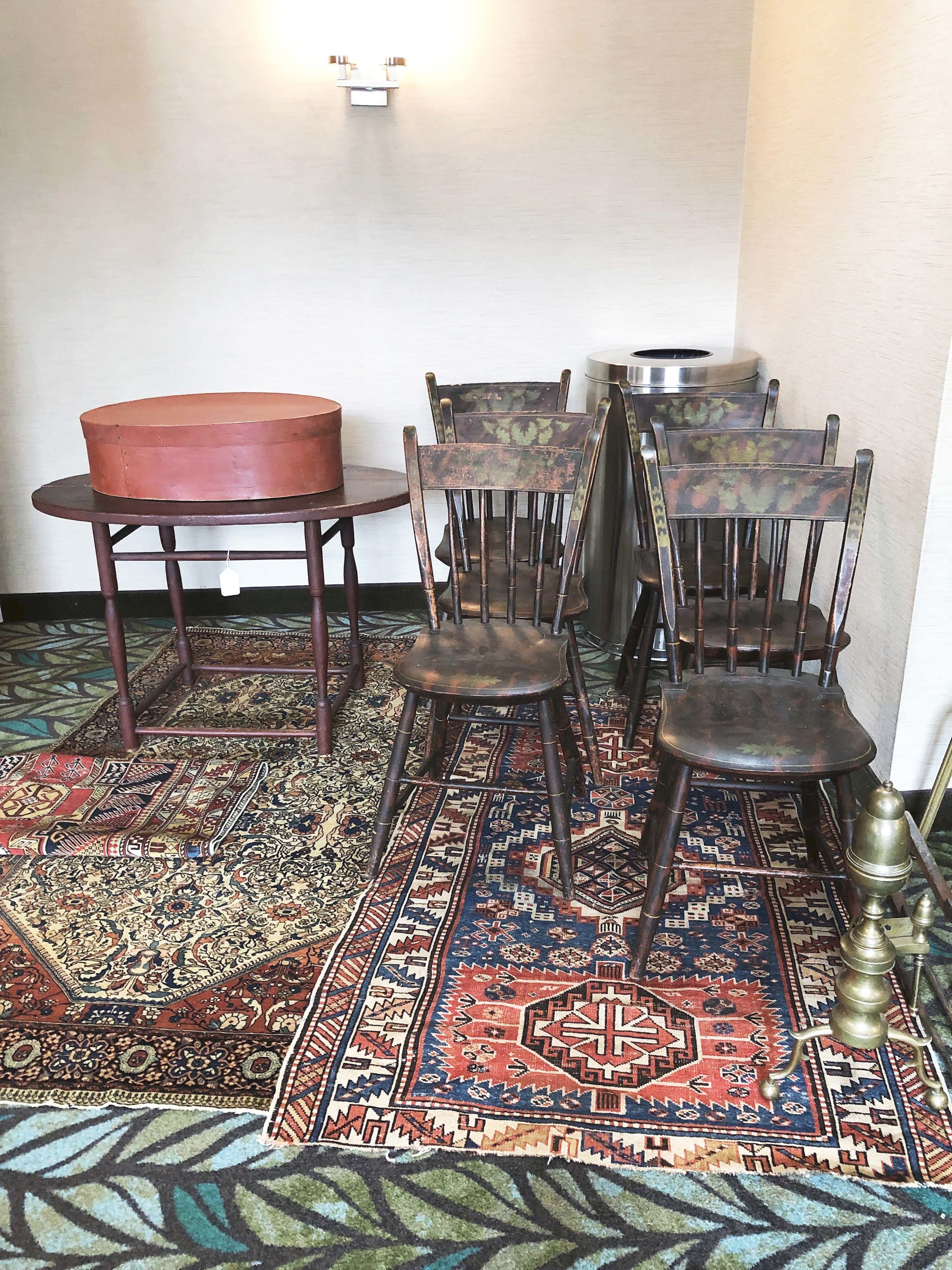
Richard Kenney, New Castle, N.H., was asking $850 for this set of six paint-decorated arrow-back chairs.
The earliest furniture at the show was in Lalonde’s booth. She had a selection of early English oak desk boxes ranging back to the time of King Charles II, who reigned from 1660 to 1680. They were priced from $1,250 and up. She also had a circa 1530-40 carved and pierced frieze panel with a portrait of King Henry VIII (reigned 1509-1547) that was possibly a fragment of a larger piece of furniture that she had priced at $1,850. Other heavily carved, stand-alone fragments were also on offer by Lalonde.
Garland had a framed early Eighteenth Century stumpwork and felt picture depicting the biblical scene of Abraham about to sacrifice his son, Isaac. In very good condition, it showed Isaac lying on a bench, Abraham with a knife raised to make the sacrifice, an angel of God and a lamb; it was priced $2,850. He also had a large Eighteenth Century, heavy wrought iron dog collar with large spikes for which he was asking $1,200.
Redware, stoneware and early English ceramics were available in several booths. Herrup, well known for redware and early ceramics, had a redware jar with manganese decoration priced $750 and a Nineteenth Century covered Maine stewpot for which he was asking $950. He also had a small creamware dog, circa 1790, which was priced $500 and a miniature, circa 1800, creamware sauceboat in the form of a swan, which was priced $575. He had a stoneware jar, which by its alkaline glaze may have been a Southern piece.
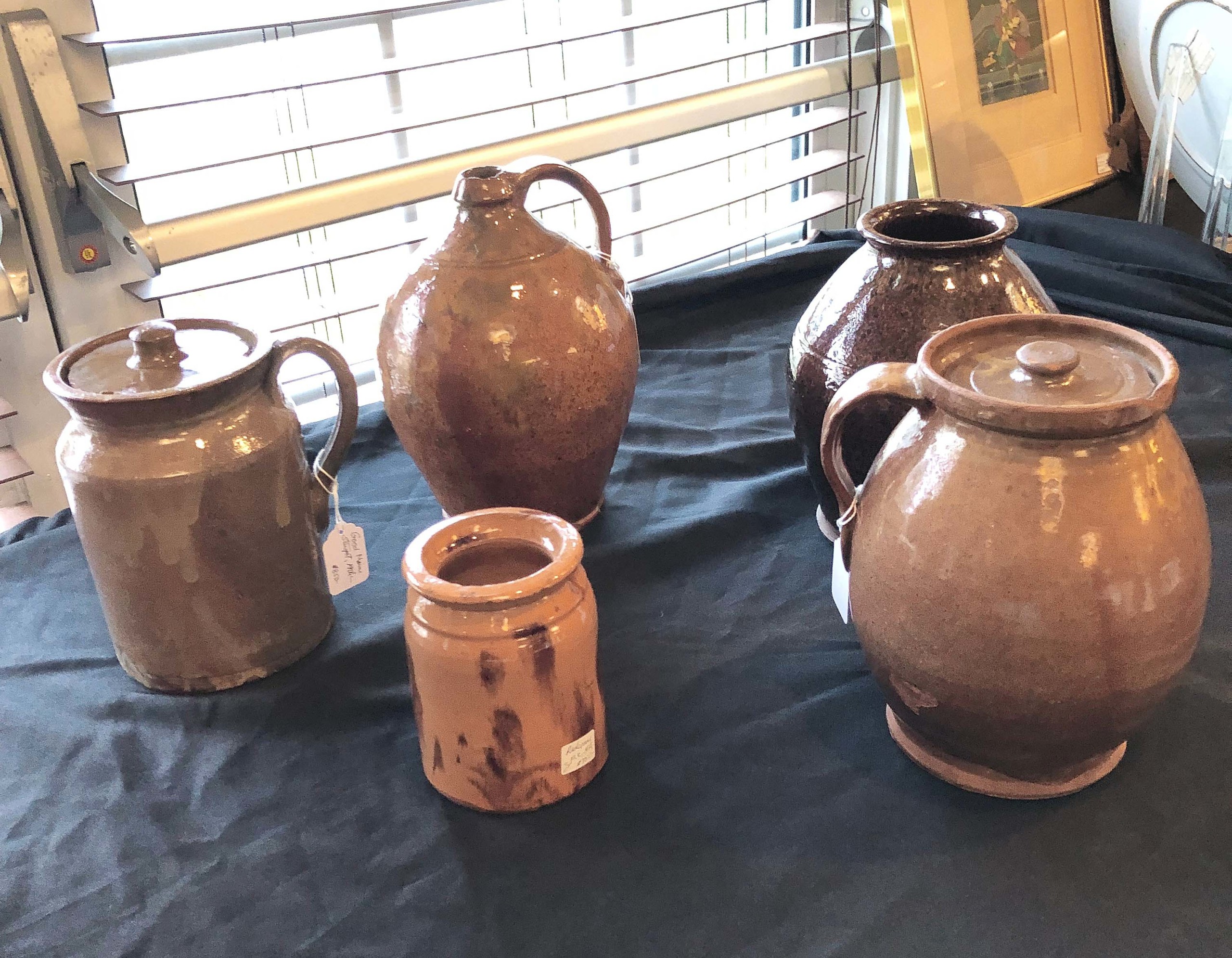
Sam Herrup, Sheffield, Mass., always has a selection of redware and early English ceramics. The redware jar with manganese decoration was priced $750.
Next to Herrup was the booth of John Prunier, who also had a three-handled stoneware jug with a blue glaze which he thought had probably been made in South Carolina. Hollis Brodrick, Portsmouth, N.H., had two George II monogramed Westerwald jugs, the larger of which was priced $1,450. Both jugs had the blue monogram “GR,” dating them to 1727-60, the years of the reign of George II. This type of jug was imported, and they were quite popular in this country, still at the time loyal to England.
Several dealers brought selections of early bottles and other glass. Ian McKelvey had a yellow Sandwich Glass compote. Brian Cullity had several early pieces, including a clear blown glass tankard. English or American, priced $230 and a pair of Nineteenth Century Pittsburgh blown glass candlesticks, priced $750. He had more as did other dealers.
After the show, Peter Mavris was, understandably, pleased. “This was our biggest show yet, in terms of exhibitors. We literally filled all the space that was available. The gate was consistent with our previous shows. Most of the dealers told me they were pleased with their sales and plan to return for the rest of the shows. It was one of those days that everything worked smoothly.”
For additional information, www.petermavrisantiqueshows.com or 207-608-3086.

